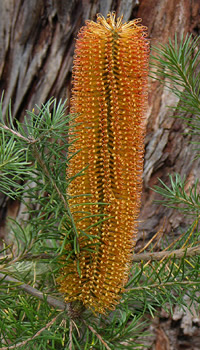Horticulture - Pest control
The Gardens practice Integrated Pest Management (IPM). Pest levels are constantly monitored, and control methods are implemented when needed.
Healthy plants are less susceptible to pests. Plant health is maintained by providing good nutrition and appropriate watering. Diseased plant material is removed from garden beds to minimise spread.
Pests can be controlled in a variety of ways, and chemical sprays are avoided to lower the risk to visitors, staff and beneficial organisms.
The large population of native birds, reptiles and beneficial insects help control pests outdoors. Mechanical means are used as well, such as squashing scale and sawfly larvae.
The staff exercise a degree of tolerance when monitoring pests outdoors. Some plants may die from pest infestations, but others in the same group will remain pest-free and survive. The basic attitude is that a low level of pests are part of a healthy garden.
Bio-control sprays and insecticides used outdoors are:
- Petroleum oil based spray on scale
- Bacillus thuringensis spray on infestations of caterpillars (mainly on the Fabaceae family)
- Confidor ® (imidacloprid) on thrips and azalea lace bug
- Merit ® to control scarab beetle in the lawns although this is likely to change to a bio-control method using nematodes.
In the glasshouses, Cryptolaemus ladybirds are purchased from commercial suppliers to predate aphids, scale and other sucking insects. In the past, predatory mites and lacewings have been used to control unwanted insects. When pest infestations become severe, the horticulturists spot spray using petroleum oil based sprays or pyrethrum.
In the nursery, Hypoaspis predatory mites and entomopathogenic nematodes are used to control fungus gnats. Petroleum oil based sprays are used for the control of scale, aphids and mealy bugs.
![Director of National Parks [logo]](../../../images/dnp_90px.gif)






